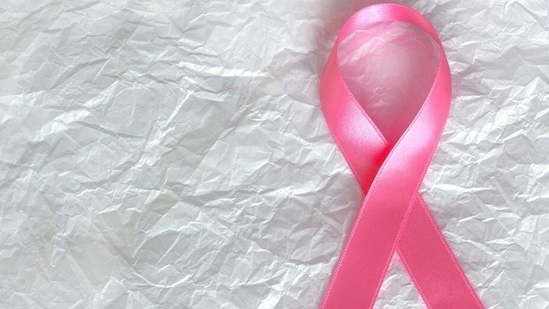Breast Cancer Awareness Month: 5-step self-examination guide you must follow
Breast Cancer Awareness Month: One of the most common cancers in women, breast cancer can be treated successfully if detected at an early stage.
The number of breast cancer cases have been rising at an alarming rate across the globe. One of the most common cancers in women, breast cancer can be treated successfully if detected at an early stage. It can even affect younger women and beginning from 20 years of age, regular screening and self-examination is required.

Some common symptoms of breast cancer are painless lump in the breast or armpit, change in breast shape, dimpling in the breast skin, abnormal nipple discharge and nipple retraction or ulceration.
As per International Agency for Research on Cancer, a total of 1.78 lakh new cases of breast cancer were diagnosed in India in 2020 which was 26.3% of all cancer cases diagnosed in women in the country making it the most commonly diagnosed cancer in India.
ALSO READ: Breast Cancer Awareness Month: Common breast cancer myths busted
“Currently, there is a spurt in cases of breast cancer. Thus, it is imperative to catch it early and treat it efficiently. Breast self-examination is a vital screening tool to know about cancer when used in combination with regular physical exams by a doctor, mammography, and even ultrasound and/or MRI, and all these screening tools work in a different way," says Dr. Madhuri Burande Laha, Consultant Obstetrician & Gynaecologist, Motherhood Hospital, Kharadi.
Self-examination is the most convenient and cost-effective way to spot any changes in your breast. Follow this 5-step self-examination guide by Dr Laha:
Step 1: Examine your breasts in the mirror. Keep the shoulders straight with arms on the hips. If you notice any swelling, dimpling, soreness, rash, puckering, unusual shape, and colour then report it to the doctor.
Step 2: Time to raise the arms and look for unusual changes like tenderness, redness, or pain in the breasts.
Step 3: Press breast and nipple to see if there is any discharge.
Step 4: Now, lie down and examine your breasts. Examine your left breast with your right hand and vice versa. For breast examination use flat palm and finger pads and go firmly in circular motion (Do not hold the breast tissue in fingers tips otherwise normal breast tissue will be felt like lump). You will have to cover the whole breast right from the collarbone to the top of the stomach. Also, don’t forget the armpit and cleavage. Move the nipple in circles, use light pressure or medium pressure for tissue in the middle of your breasts. You need to press firmly the deep tissue in the back.
Step 5: Now, time to examine the breasts while standing or sitting. This can be an easy way to spot any changes. So, again you need to cover the whole breast by going in the circular motion.
"It is essential for you to avoid ignoring the red flags like lumps, lumpy areas, soreness, tenderness, rash, puckering, and unusual shape, along with watery, fluid, or yellow discharge. Timely intervention can reduce mortality and morbidity that occurs owing to breast cancer," says the doctor.
Catch your daily dose of Fashion, Health, Festivals, Travel, Relationship, Recipe and all the other Latest Lifestyle News on Hindustan Times Website and APPs.



